
Bending Notes
Bending notes on the harmonica is a fundamental part of harp playing.
Bending notes adds expression and uncovers hidden notes on the harmonica.
Did you know that you could bend notes blowing as well as drawing? I'll show you which holes can be bent as well as tips to get you bending quicker.
Lesson Info
Difficulty: Takes lots of practice
Lesson Length: 16:20
Instructor: George Goodman
What is bending, why does bending occur, what holes can be bent and by how much?
Recommended Gear
A C harmonica is the first one you need to follow along with the lessons on the site. I often play a Hohner Special 20 Harmonica in the key of C through a Shure Green Bullet microphone Model 5200 and Fender Super Champ amplifier
Bending
Bending Notes On Harmonica
The reeds of the harmonica are tuned to specific tones or notes. A C major diatonic harmonica will contain notes that are particular to the C major scale. Techniques exist, however, that let the harmonica player play beyond the notes of the major scale that the harmonica is tuned to. These techniques will allow the player to lower the pitch on certain holes and thereby expanding the range of the harmonica.
Some holes on the harmonica will bend or lower while drawing on the harmonica and some will bend while blowing. A couple of holes don’t bend much either way and the holes that will allow bending will bend to differing degrees ranging from a single semi-tone up to three semi-tones.

Let’s use the C major harp above. Blue letters above the harmonica are blow holes, white letters below the harmonica are draw holes.
Remember, every hole can produce two tones. When bending on the harmonica, the higher note on any hole can be lowered to within a semi-tone of the lower note on that hole.
Hole 1 - the draw D can be bent down a semi-tone to Db or C#.
Hole 2 - the G can be bent down two semi-tones, Gb or F# and F.
Hole 3 - will bend three semi-tones so that an experienced player can play four different nameable tones while drawing on the 3 hole – B, Bb, A, and Ab.
Hole 4 – This is the same as the first hole. D can be bent to Db.
Hole 5 – There already is only a semi-tone between the draw F and blow E so there is nowhere to draw to. You can make some variations in pitch by bending but not much.
Hole 6 – The draw A can be bent down a semi-tone to Ab or G#.
Hole 7 – Similar to hole 5, there is only a semi-tone separating the blow and draw.
Hole 8 – Things change here. Now it’s the blow that is higher than the draw. In this case, you can lower the tone by a semi-tone by bending while you blow. The 8 blow can play the note E and be bent down to Eb.
Hole 9 – Blow G can be bent down a semi-tone to F#.
Hole 10 – Theoretically, blow C can be bent down two semi-tones, B and Bb. Good luck with that. This is very difficult because the reed on the 10th hole is very short making bending difficult. If you have a G diatonic harmonica, try bending the 10th hole on it. This will be easier again because the reed on the 10 blow hole on the G harmonica is longer than on the C. In fact, bending the 9th hole on the C harmonica is the same as bending the 10th hole on the G harmonica.
Physics of Note Bending
The techniques of bending change the direction of the flow of air in such a way that the opposite reed starts to vibrate as well. For instance, when drawing on the first hole, the bottom reed (the draw reed) will vibrate. When this hole is bent, the top reed or blow reed will also vibrate. Once the note is bent down as much as is possible (a semi-tone, Db), almost all of the vibration is being done by the blow reed while the draw reed is almost silent. Anywhere in between and both reeds are vibrating and producing the note.
So, when drawing on hole 2, you can produce G, F#, and F. G is produced by a straight draw and just the draw reed vibrating. F# is produced when both the blow and draw reeds are vibrating and further bending resulting in the note F will occur when the blow reed is vibrating and the draw reed has nearly stopped.
Cool, right?
The Art of Bending
This is kind of difficult to explain because the processes that take place occur in your mouth. In order to get the opposite reed vibrating, the direction of air flow needs to change and this is done by changing the shape of your vocal cavity.
One thing is for sure, though, and that is bending is easier to do when you are breathing properly with your diaphragm and stomach muscles.
Let’s start with hole 4. This should be one of the easiest holes on the harmonica to bend. We can draw D down to C#.
Begin by drawing normally on hole 4. To get the note to bend, while drawing on hole 4, drop your jaw down and out, flatten your tongue against the bottom of your mouth, open your throat and air passages and think the note lower.
This changes the shape of your vocal cavity and causes the direction of the flow of air to change which hopefully and with some practice will get the blow reed vibrating and cause the pitch to lower.
Helpful Hints to Bending the Harp
1) Try to vocalize the sound ‘wee-ahh’ while drawing on the harmonica. ‘wee’ is the straight part and the ‘ahh’ is the bent part when the jaw drops down and out.
2) Can you whistle while breathing in? The action needed to bend a note on the harmonica is similar to the action needed to lower the pitch of a whistle made on the intake.
3) Practice using a straw Take a straw and breathe in through it with the straw pointing straight forward. While breathing in, lower your jaw down and out so that the straw is pointing upwards. This is the type of motion you want when bending while drawing on the harmonica.
4) Use proper deep breathing employing the stomach muscles and suck the notes down.
Trial and error, experimentation and practice are going to be required here. You need to adjust the flow of air and the size and shape of the vocal cavity to get things bending.
Hole 1
Once you’ve made some progress with bending on hole 4, try doing the same with hole 1. The same process applies and this hole will also only bend a semi-tone, from draw D to C#.
Hole 2
Next, try bending hole 2. Here you can bend down 2 semi-tones, F# and F. So now we need to be thinking about and listening to the degree of the bend. Here, playing with a guitar or using a tuner can be very helpful.
On the guitar, play the notes descending, G, F#, F and try to get them in your head. G is sixth string, third fret, F# is sixth string, second fret and F is sixth string, first fret. Can you sing them? Now try to reproduce them on the harmonica by drawing and bending hole 2. Bend a bit to get F#, bend a lot to get F. The F will probably be easier to hit as it will be sounding when you are fully bending the hole. The F# is more difficult as it is a degree of bending.
To get really good at this you will want to mess things up. Practice alternating from G to F# and then G to F and then alternating F to G and F# to G.
These are not easy techniques to master, so don’t get frustrated. At first, just get the note bending. Control will come with time and practice.
Hole 3
Ok, let’s try hole 3. Bending on hole 3 is the most difficult because it covers the largest interval. The straight draw sounds the note B which can then be bent by degrees to Bb (single bend), A (double bend), and Ab (triple bend). Again hearing them first on a guitar is very helpful and if you can sing the notes then better still. On the guitar, B is located on the fifth string, second fret, Bb is fifth string, first fret, A is fifth string open and Ab is sixth string, fourth fret.
Start with a normal draw on hole 3 sounding the pitch, B. Now bend it down as much as it will go, all the way down to Ab. As with hole 2, the full bend (triple bend in this case) will be the easiest to hit. The notes A and Bb will be much more difficult to hit and control.
When you can sound the A-flat, relax the jaw and tongue a bit so that the pitch raises. Continue until you’re back to a normal draw. Along the way, you would have passed the pitches A and B-flat.
Now try going the other way. Start with B as a normal draw and slowly pull the note down through B-flat, to B and finally to A-flat.
Can you sing the descending semi-tones? Try to match those pitches. Again, a guitar can be a big help here.
Hole 5
Here the interval between blow and draw is a semi-tone and very little bending happens with the fifth hole
Hole 6
After holes 2 and 3, this one should be a breeze. Just a single semi-tone to bend similar to holes 1 and 4.
Hole 7
Move along. Nothing to bend here.
Hole 8
Now it’s time for some bending while blowing. Here the principals are similar to bending while drawing – you want to change the direction of the flow of the air by changing the shape of the vocal cavity.
Start with a straight blow into hole 8, thinking the syllable ‘wee’ and sounding the note E. Now change the ‘wee’ to an ‘aah’ while thinking it down a semi-tone to E-flat. Pursing your lips a little bit might help. Ensuring that you are blowing from the stomach will definitely help.
Once you can manage that, start with the note bent, E-flat, and then un-bend to E. Thinking ‘ahh-wee’ may help.
Hole 9
Repeat the patterns from Hole 8 bending from G to F# and then F# to G. This is a tough one and will be difficult to make happen and control.
Hole 10
As mentioned above, bending hole 10 on a C major diatonic harmonica with any kind of control is very difficult.
Embellishments Vs Target Notes
Note bends are played both as ornamentations as well as target notes. When used as an ornamentation, bends embellish or add effects to a note. You can start a note bent and then resolve it to the unbent note. You can play a note and then bend it resulting in a mournful bluesy sound. You can take a shake or trill (see Harmonica Embellishments below) and bend it to give it a dirty, gritty sound.
Target note bends are more difficult as they need to be hit right off the bat and not scooped into or slurred down to. Some common target bends include
1) Bending the hole 3 draw down a semi-tone. This produces the note B-flat which is part of the G blues scale. (Remember that a C harmonica played in cross harp is used for blues in G because drawing on the second, third, fourth and fifth holes produces a G7 chord).
2) Bending the fourth hole down a semi-tone is another common target bend. This results in the note C# which is also part of the G blues scale.
3) Bending the second hole a full tone (or two semi-tones) produces the note F which is part of the G blues scale as well as the G7 chord.
4) Performing a double bend on hole 3 will produce the sixth degree of the major scale allowing first position melodies to be played in the lower octave.
Use the different methods explained to help you with bending notes on harmonica.
Use the guitar to help get the bend just right.
Practice, practice, practice.
See you in the next lesson.
5 Pack Case of Hohner Special 20s
What do I like about the Special 20s?
Great Sound, Smooth Comb, Responsive to Bending - but not loose, Affordable. I play Special 20s more than any other model.
Martin Acoustic Guitar Strings
If it's been a while since you've changed your strings, you won't believe the difference in the sound. These are some excellent Martin strings. Need I say more? Totally affordable.
Hohner Harmonica Holder
The Hohner Harmonica Neck Holder fits harmonicas up to 7-1/2" long, has a nickel plated finish and fits any neck shape.
I have used a similar holder for over 25 years. This no-nonsense holder will work for you.

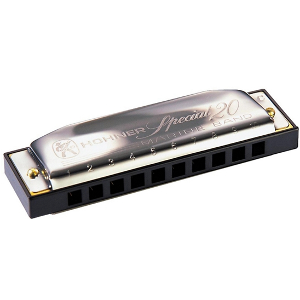
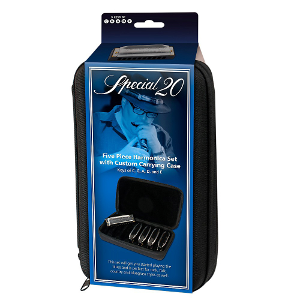
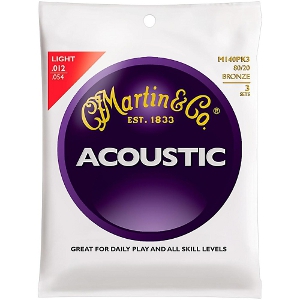
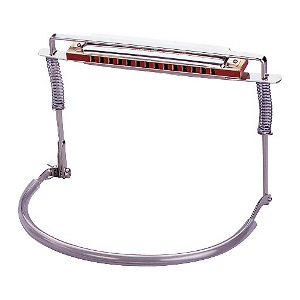


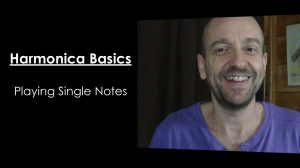
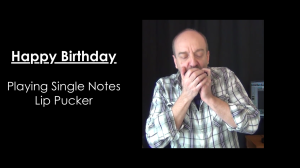


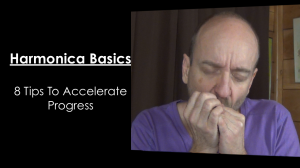
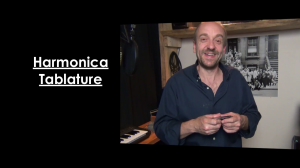

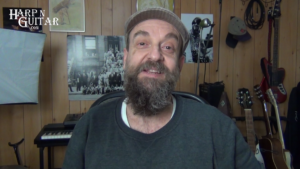
Leave a Reply